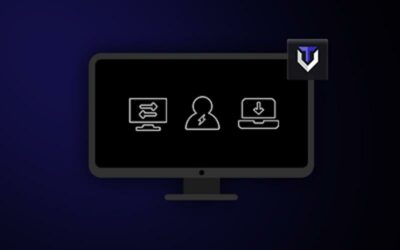Many factors contribute to the search for highly qualified specialists today: detailed CV, several stages of interviews, websites with a variety of candidates. This applies to both local and remote workers. However, the method of managing one and the other is significantly different. In this article, we will look at the difference between a remote and a virtual team and talk about managing offshore development teams.
DIFFERENCE BETWEEN REMOTE AND VIRTUAL TEAMS
The task for a remote and virtual dedicated team is the same – work on a common project through online communication: video calls, CRM, social networks. So how are these two groups different?
The members of the remote or offshore team can be located in different geographic zones, but the virtual team is located in the same time and geographic zone. Also, the difference is that the members of remote development teams report to one project or team manager, and the members of virtual teams are accountable to each other.
Businesses create virtual teams when they want to save financial and time resources. For members of such a team, there is no need to rent an office, and communication arises only on business issues. Having a team that comes together only to achieve the goals of the company has a huge advantage for the results of work. For example, in order to improve complex processes such as research and development, companies form centers of excellence that bring together people in a single network from different branches located at a distance from each other. Managers can take advantage of such an organizational structure by hiring people from different fields with different specializations and creating a team with an optimal set of competencies that will be able to solve complex and specific problems.
IMPORTANCE OF THESE TEAMS TO THE FUTURE
Remote work has become an integral part of our lives with the COVID-19 pandemic. This format made it possible to preserve jobs and find new applications for modern technologies, which have become more like tools for earning money than interactive elements of our life.
Employers find remote work attractive because:
- Employees are more productive in the home office than in the office space. This is indicated by 66% of respondents from the FlexJobs survey.
- Manages to maintain a balance between work and personal life, which is important for the quality of employees’ work.
- The talent pool is not limited by location. You can choose any of the best specialists, regardless of where they currently reside.
IDENTIFYING GOOD REMOTE WORKERS IN THE PROCESS OF WORK
Remote productivity is based on how efficiently employees are using their time, whether they set goals and strive to achieve them, and whether they have a positive impact on the team. To measure these metrics, you can use job-specific metrics. Everyone’s job responsibilities are different, so you need to find metrics against which to measure employee performance. You should also focus on reviews from other employees and internal polls in the company.
Also, it is important that each team member has leadership skills. In remote work, it is much more difficult for the team leader to work and lead the team. Therefore, each employee must be able to take responsibility, make independent decisions, and be a leader when necessary.
MANAGEMENT OF REMOTE AND VIRTUAL TEAMS
Remote team management has a number of basic principles associated with managing any team, remote team cost, and at the same time imposes new requirements on the ways of interaction, communication, decision-making, work execution, workspace organization, and working time. We have highlighted several particularly important principles that you should pay attention to and base your management course on.
1) Organize your digital office space
Use video conferencing services that support open video rooms, such as Zoom. Create virtual zoom-in meeting rooms for each team, where anyone can enter and communicate with their voices. You can even create a virtual zoom kitchen coffee shop where employees can communicate during a coffee break.
2) Minimize the number of digital services, standardize them and make full use of them
To manage a remote team use one service in each category, avoid duplication. Someone will temporarily feel uncomfortable, but the whole organization will benefit from the decision. It is important to find convenient programs for working remotely with projects and for communicating with each team member. For example, a convenient corporate messenger for communication and file transfer Slack, an interactive board for ideas and reflections Miro, and a video conferencing platform that can host several hundred people Zoom.
3) Provide continuous feedback from employees, measure their happiness and stress
You cannot improve something that cannot be measured. This saying of Peter Drucker’s is one to follow. Human resources is an organization’s greatest asset and value, especially in times of remote work. In this regard, you must constantly think about the emotional, personal, and professional well-being of your employees. Polling systems are often used for this. These are programs that ask employees questions about engagement.
In managing a virtual team, you should pay attention to the following points:
- Set a common goal for the team. Virtual team members need to know and understand what they are working on together. If people only know the current tasks and work that they must personally perform, then they will not feel like a team but will act as individual performers. Realizing that each of them is a team, people are more responsible towards common goals, towards work for the result, and more actively cooperate with other team members.
- Plan for the transfer of results. It happens that some members of the team work on the same or on interconnected projects. If so, the project manager needs to establish some rules for passing the results of work from one colleague to another. In order to set up goal synchronization in a virtual team, it is very effective to make some kind of regular announcements or reminders of what is the current priority of the work.
CONCLUSION
Corporate messengers, video calls, and online meeting rooms are of great importance for efficient communication in remote and virtual teams. Not only the employee is responsible for the quality of the work of employees but also how he is managed. Use the above guidelines and you will be able to get the best results from remote and virtual teams.




